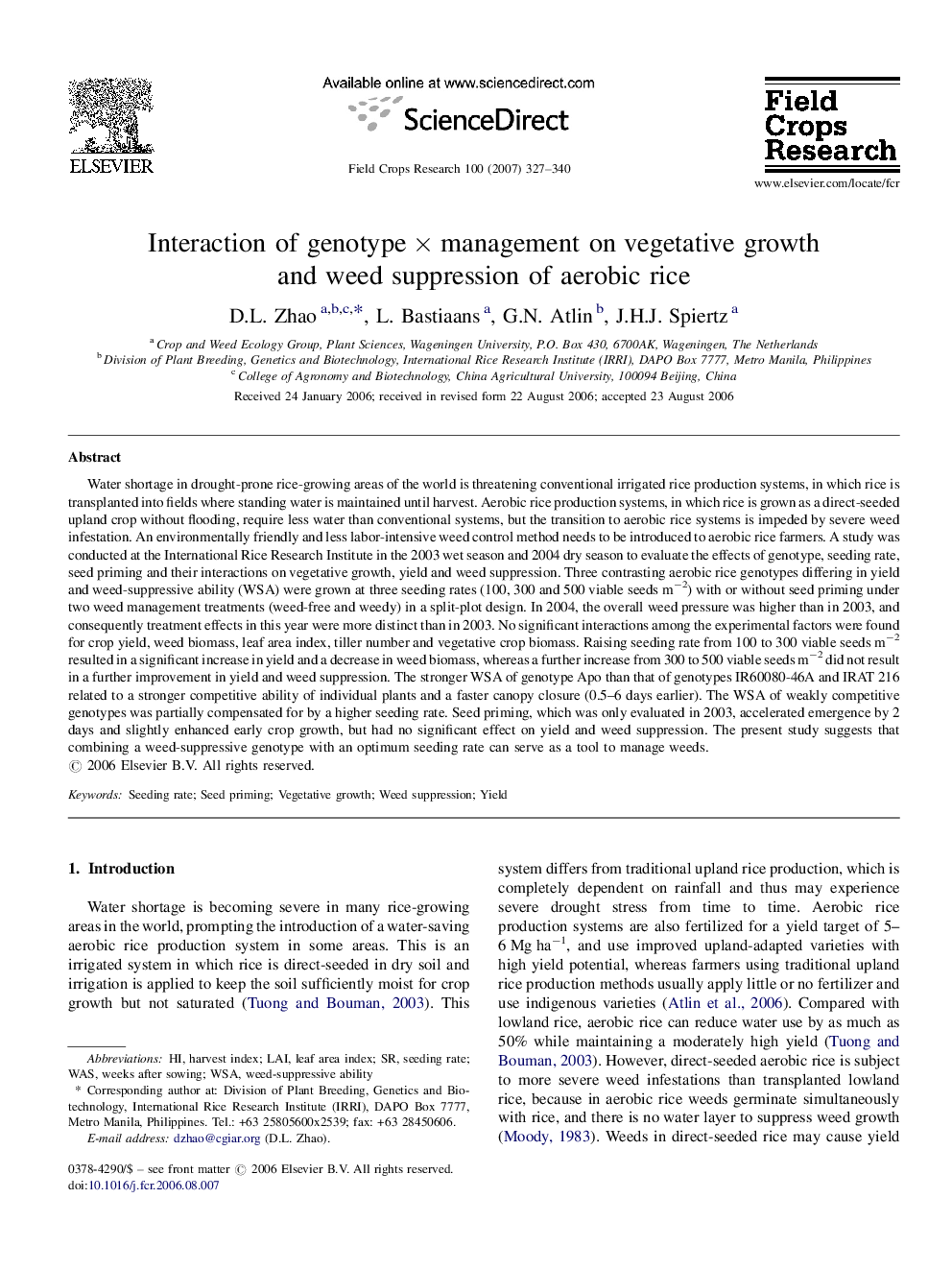| کد مقاله | کد نشریه | سال انتشار | مقاله انگلیسی | نسخه تمام متن |
|---|---|---|---|---|
| 4511680 | 1624749 | 2007 | 14 صفحه PDF | دانلود رایگان |
عنوان انگلیسی مقاله ISI
Interaction of genotype Ã management on vegetative growth and weed suppression of aerobic rice
دانلود مقاله + سفارش ترجمه
دانلود مقاله ISI انگلیسی
رایگان برای ایرانیان
کلمات کلیدی
موضوعات مرتبط
علوم زیستی و بیوفناوری
علوم کشاورزی و بیولوژیک
علوم زراعت و اصلاح نباتات
پیش نمایش صفحه اول مقاله

چکیده انگلیسی
Water shortage in drought-prone rice-growing areas of the world is threatening conventional irrigated rice production systems, in which rice is transplanted into fields where standing water is maintained until harvest. Aerobic rice production systems, in which rice is grown as a direct-seeded upland crop without flooding, require less water than conventional systems, but the transition to aerobic rice systems is impeded by severe weed infestation. An environmentally friendly and less labor-intensive weed control method needs to be introduced to aerobic rice farmers. A study was conducted at the International Rice Research Institute in the 2003 wet season and 2004 dry season to evaluate the effects of genotype, seeding rate, seed priming and their interactions on vegetative growth, yield and weed suppression. Three contrasting aerobic rice genotypes differing in yield and weed-suppressive ability (WSA) were grown at three seeding rates (100, 300 and 500 viable seeds mâ2) with or without seed priming under two weed management treatments (weed-free and weedy) in a split-plot design. In 2004, the overall weed pressure was higher than in 2003, and consequently treatment effects in this year were more distinct than in 2003. No significant interactions among the experimental factors were found for crop yield, weed biomass, leaf area index, tiller number and vegetative crop biomass. Raising seeding rate from 100 to 300 viable seeds mâ2 resulted in a significant increase in yield and a decrease in weed biomass, whereas a further increase from 300 to 500 viable seeds mâ2 did not result in a further improvement in yield and weed suppression. The stronger WSA of genotype Apo than that of genotypes IR60080-46A and IRAT 216 related to a stronger competitive ability of individual plants and a faster canopy closure (0.5-6 days earlier). The WSA of weakly competitive genotypes was partially compensated for by a higher seeding rate. Seed priming, which was only evaluated in 2003, accelerated emergence by 2 days and slightly enhanced early crop growth, but had no significant effect on yield and weed suppression. The present study suggests that combining a weed-suppressive genotype with an optimum seeding rate can serve as a tool to manage weeds.
ناشر
Database: Elsevier - ScienceDirect (ساینس دایرکت)
Journal: Field Crops Research - Volume 100, Issues 2â3, 1 February 2007, Pages 327-340
Journal: Field Crops Research - Volume 100, Issues 2â3, 1 February 2007, Pages 327-340
نویسندگان
D.L. Zhao, L. Bastiaans, G.N. Atlin, J.H.J. Spiertz,